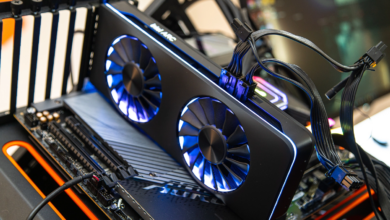Linux for Beginners: The U.S. User’s Getting Started Guide
Linux for beginners made easy. Discover the best distros, essential commands & setup tips for US users. Ditch Windows, embrace freedom now.

For many U.S. computer users, Linux for beginners may seem like uncharted territory an operating system reserved for programmers and tech experts. However, Linux has evolved into a user-friendly, powerful alternative to Windows and macOS, offering unmatched customization, security, and freedom. Whether you’re looking to breathe new life into an old laptop, explore open-source software, or simply take control of your digital experience, Linux provides a cost-effective and privacy-focused solution. This guide will walk you through the essentials, from choosing the right version of Linux to mastering basic commands, all tailored for American users.
The beauty of Linux lies in its flexibility unlike proprietary systems, it comes in many flavors called distributions, each designed for different needs. From Ubuntu’s polished simplicity to Linux Mint’s Windows-like familiarity, there’s a perfect Linux version for every beginner. Beyond personal computing, Linux powers everything from smartphones to supercomputers, making it a valuable skill in today’s tech-driven world. By the end of this guide, you’ll understand why millions worldwide including a growing number of U.S. users are embracing Linux.
Linux for Beginners
Understanding Linux
Linux is an open-source operating system built around the Linux kernel, developed by Linus Torvalds in 1991. Unlike Windows or macOS, Linux is not owned by a single company but is maintained by a global community of developers. This collaborative approach ensures transparency, security, and constant innovation. One of the biggest advantages of Linux is its variety of distributions or distros.
Several benefits
For U.S. users, Linux presents several benefits, including cost savings no licensing fees, better privacy controls, and resistance to malware. Additionally, Linux powers many critical systems, from web servers to Android smartphones, making it a valuable skill for tech enthusiasts and professionals alike. Each tailored for different needs Ubuntu Linux for Beginners, Fedora for developers, and Linux Mint for those transitioning from Windows.
Choosing the Right Linux Distribution
With hundreds of Linux for Beginners distros available, selecting the right one can be overwhelming. Linux for Beginners should start with user-friendly options like Ubuntu, Linux Mint, or Zorin OS, which offer intuitive interfaces and strong community support. These distros come with pre-installed software, including web browsers, office suites, and media players, making the transition smoother.
Installing Linux on Your Computer
Installing Linux is simpler than ever, thanks to graphical installers that guide users through the process. Before installation, back up important data and verify that your hardware meets the system requirements. To install Linux, download the ISO file from the official website and create a bootable USB using tools like Rufus Windows or BalenaEtcher macOS/Linux. Restart your computer, enter the BIOS/UEFI menu usually by pressing F2, F12, or DEL, and select the USB drive as the boot device. The installer will then walk you through partitioning your drive, setting up user accounts, and configuring system preferences.
Navigating the Linux Desktop Environment
Unlike Windows and macOS, Linux offers multiple desktop environments (DEs), each with a unique look and feel. New users should experiment with different DEs to find the one that best suits their workflow. Most Linux distros allow you to switch DEs without reinstalling the OS. Most Linux distros require at least 4GB of RAM, 25GB of storage, and a 64-bit processor. Many distros also allow dual-booting alongside Windows, enabling you to switch between operating systems.
Essential Commands Linux for Beginners
While modern Linux for Beginners distros emphasize graphical interfaces, learning basic terminal commands is crucial for troubleshooting and advanced tasks. Here are some fundamental commands. The terminal may seem daunting, but it’s a powerful tool that enhances productivity once mastered. When selecting a distro, consider factors like hardware compatibility, software availability, and update frequency.
Stability and Performance
One of Cinnamon’s strongest advantages is its stability and performance, making it ideal for both modern and older hardware. Unlike heavier desktop environments, it avoids excessive animations and resource-heavy effects while still delivering a polished look. The built-in Nemo file manager, Cinnamon Settings panel, and system tools ensure smooth navigation and easy configuration without requiring terminal commands.
KDE Plasma
KDE Plasma is one of the most popular and customizable desktop environments available for Linux, known for its sleek design and modern user experience. Built on the KDE framework, Plasma offers a visually appealing interface with smooth animations, dynamic widgets, and extensive theming options. Unlike heavier desktop environments, it balances aesthetics with performance, making it suitable for both older and newer hardware.
Installing and Managing Software
Linux software is primarily distributed through package managers, which simplify installation and updates. Ubuntu and Debian use APT, while Fedora relies on DNF. Most distros also include graphical app stores (like GNOME Software or Discover), where users can browse and install applications with a single click. For software not available in official repositories, third-party options like Snap and Flatpak provide universal.
Security and Privacy in Linux
One of Linux’s strongest advantages is its security model. Unlike Windows, Linux for Beginners has a robust permission system, reducing the risk of malware infections. Regular updates, firewall configurations (ufw), and built-in encryption tools further enhance security. Privacy-conscious U.S. users will appreciate Linux’s lack of telemetry and data collection, a common concern with proprietary operating systems. Tools like Tor, Firefox with privacy extensions, and encrypted email clients are easily accessible on Linux.
Troubleshooting Common Linux Issues
While Linux is stable, Linux for Beginners may encounter issues like driver incompatibility or software conflicts. Most problems can be resolved by: Searching community forums e.g., Ask Ubuntu, Reddit’s r/linux4noobs. Checking system logs journalctl. Updating packages sudo apt update && sudo apt upgrade. Using alternative drivers e.g., NVIDIA proprietary drivers for gaming. The Linux community is known for its helpfulness, so don’t hesitate to ask for assistance.
Read More: How Telecom Is Powering Smart Cities in the USA
Conclusion
Linux for beginners is an exciting journey into the world of open-source computing. While the initial learning curve may seem steep, the rewards greater control, enhanced security, and cost savings are well worth the effort. U.S. users, in particular, can benefit from Linux’s privacy-focused design and growing adoption in both personal and professional settings. Advanced users may prefer Arch Linux or Gentoo, which provide greater control.
Whether you’re looking to revive an old computer, explore programming, or break free from proprietary software, Linux offers a versatile and empowering alternative. With the right distro and a bit of patience, you’ll soon discover why Linux has become a favorite among tech enthusiasts worldwide. Additionally, many Windows applications can run on Linux via compatibility layers like Wine or virtualization tools like VirtualBox.
FAQs
Is Linux for Beginners difficult to use?
Modern Linux distros like Ubuntu and Linux Mint are designed Linux for Beginners, offering user-friendly interfaces and extensive documentation.
Can I run Windows applications on Linux?
Many Windows apps work via Wine or virtualization, though some may require alternative Linux-compatible software.
Is Linux really free?
Yes, most Linux distributions are free to download, use, and modify under open-source licenses. For those interested in learning system administration or software development, Fedora or Debian are excellent choices.
Which Linux for Beginners distro is best?
Ubuntu, Linux Mint, and Zorin OS are excellent starting points due to their ease of use and strong support communities.
Will Linux work on my old computer?
Yes, lightweight distros like Lubuntu or Xubuntu are optimized for older hardware, extending the life of aging machines.











